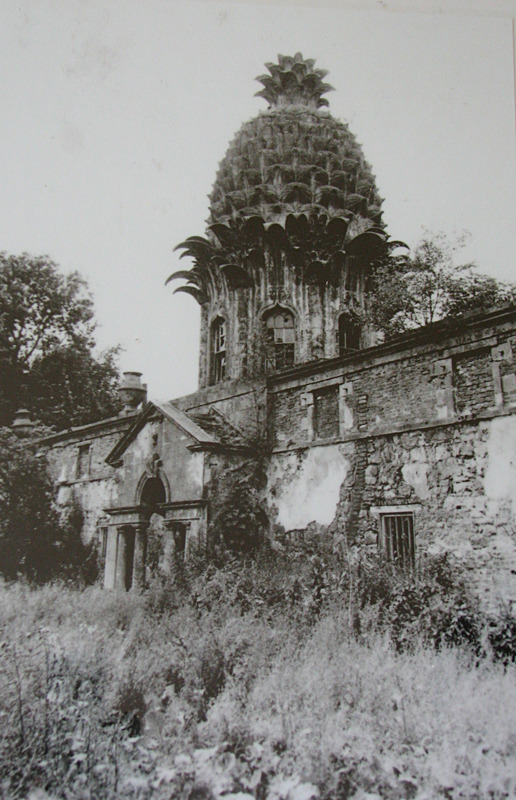
The tropical pineapple was first grown in England in the reign of King Charles II, and a painting was made of the royal gardener, John Rose, presenting the first one to the king. Perhaps at that point, the two distinct forms, the pine-apple (cone) and the pineapple (tropical fruit) were merged into a single emblem. London architects of the post-Great-Fire period used the pine-apple freely. †
The Dunmore Pineapple is an 18th century summerhouse building with a giant stone pineapple as its central architectural feature. It is located in Dunmore Park, in Stirlingshire, Scotland, and has been described as one of the United Kingdom’s greatest follies, and ‘the most bizarre building in Scotland’.٭
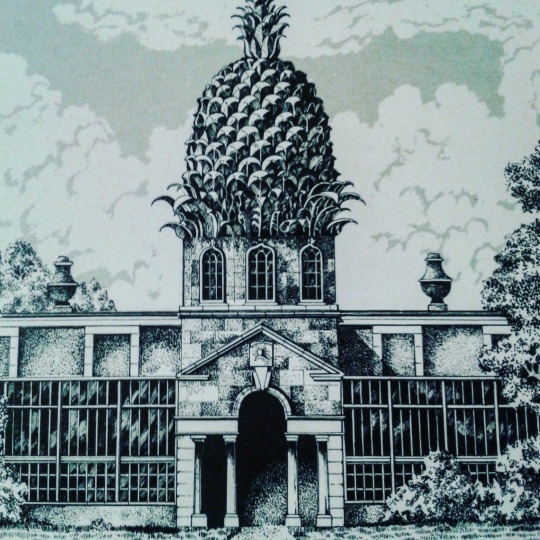
Illustration of Dunmore’s Pineapple with the house-houses.
The two-storey building contained a hothouse along the lower front level and was built around the time of 1761 by John Murray, the 4th Earl of Dunmore. The hothouse was used, among other things, for growing pineapples which were considered to be exotic fruit that travellers to the Indies and America would bring back as trophies.
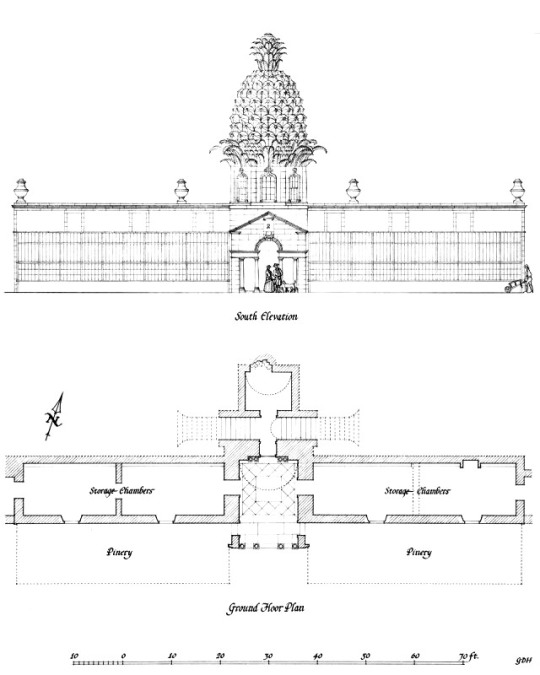
Built into a hill, from each side they appear to be on ground level. The south side (as depicted by Barbara Jones) had the hothouses lining the edge of the building, backing on to the walled orchard and gardens. The north side (as depicted by Ed Kluz) has the top of the Pineapple folly.
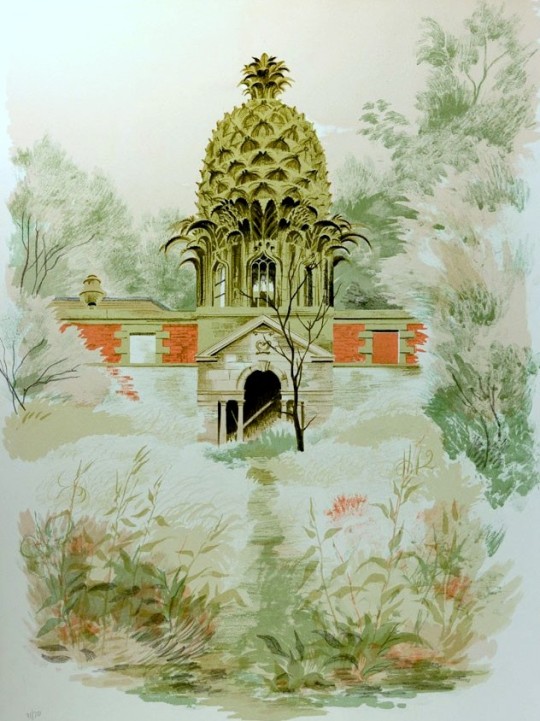
South Elevation of the Dunmore Pineapple by Barbara Jones.
The pineapple is around 14 metres high and is intricately carved in stone to form an elaborate cupola on top of an octagonal pavilion. Conventional architraves put out shoots and end as stone-shaped ‘prickly leaves’. According to its intended purpose as a hothouse, the walls are of double construction with a cavity for the circulation of hot air for the old greenhouses.
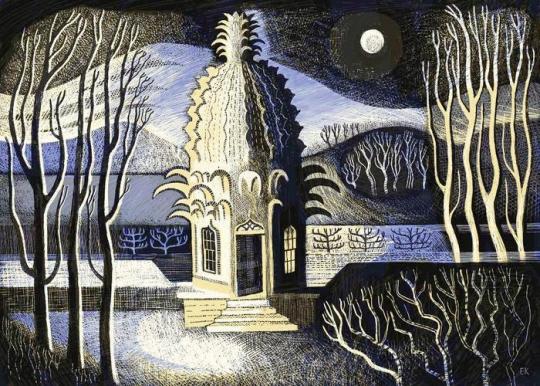
North Elevation of the Dunmore Pineapple by Ed Kluz.
† Sacred Architecture of London by Nigel Pennick, 2012. 9781904658627
‡ The Pineapple: King of Fruits by Francesca Beauman 2006 p117 9780099469445
٭ Collins Encyclopaedia of Scotland – p22, 2000 9780007103539